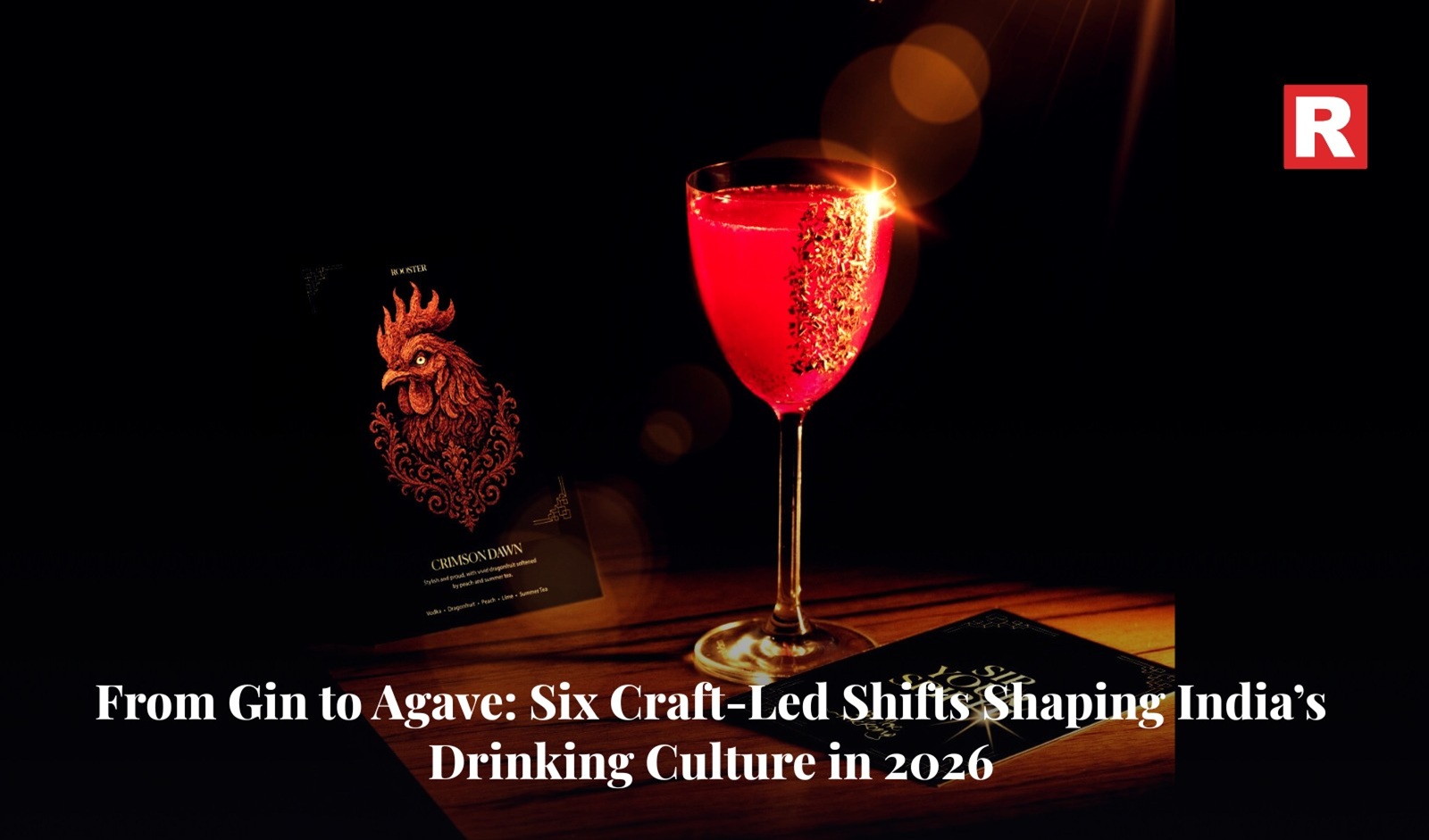
Travel and exploration by chefs to incorporate unique techniques in their cooking methods has now become a way to keep creating exotic dishes in order to refresh the palate of diners across the world. Indian chefs are serving food with a global appearance to give consumers a premium dining experience and make it more appealing. An attempt of giving global dishes a twist with the regional flavours and ingredients is discernible today.
Abishek Gupta, the executive sous chef at Leela, who interned at the famous Noma restaurant in Copenhagen, said, “Travelling for me is only to learn from various places and people, and then come back not to replicate something but to create something new, which is not only very Indian and is also accepted by a global diner.”
In an exclusive interview with Restaurant India, he spoke about his travels and how has it influenced his methods and thought process of cooking. He is a member of Epic, a pop-up dining experience serving “experimental cuisine” at leela, where they have created more than 320 plus innovative dishes. “This restaurant is more about experimental cuisine, majorly working with a lot of Indian flavours. It is an integration of global experience with local flavors by using local ingredients,” he said.
Koliwada (fishermen community in Mumbai) Fish Ceviche is one of the distinctive dishes they serve on a live fish aquarium. Ceviche, which is a seafood dish originated in Peru, is traditionally made of raw fish cured by lime juice and spiced by chilli. “The idea is to pay homage to people working hard to get seafood. We used Peruvian technique to make Ceviche and combined it with our local fish. It was very well appreciated and enjoyed by diners,” he said.

Epic, which is a pet project of a team of chefs at Leela, has bookings basically from word of mouth. “The idea is not to make money but create awareness among the clients that Indian ingredients can also be at the prime level. I don’t need to have white asparagus from northern Italy, I can probably use egg plant from Himachal and make it as premium as white asparagus,” Gupta said.
After a continuous endeavor of getting to work under Rene Redzepi at Noma restaurant (which came under the best 50 restaurants in 2010) in Copenhagen, Abhishek finally got a reply to join them. “I was trying to work for René for five years and the fifth year I got a chance in 2016 to go and work for him. I was trying and applying like mad. The aim was to understand their brainwork behind dishes. There are people from 26 different nationalities there and everybody looks at it differently,” he said.
The process of fermentation has been gaining popularity in the global arena lately. However, Chef Abhishek says, “If you go to northeast region or Assam, you will find people working on slow food, ants, and meat pickles. It is not something we don’t know. We have dishes like idli, dosa and jalebi that are fermented. This technique is deep-rooted in our cuisine, it is just that we could not experiment it further.”
He also shared his experience of the time when he was vacationing in the Himalayas and was offered biccchu ghas(nettle leaf) ki sabji with mandwe aate ki roti there, which he then cooked and served at his restaurant.
Gupta has traveled to around 15 odd countries and whether it is Italy or Japan, he has always tried to learn and experience from different culinary practices and has build something new from the local ingredients available in the country.

As we approach the New Year, it's a good time to check what the industry and the expert believe and foresee the trends and shifts in the culinary world in 2024. Here are top five trends that is going to change the way we have been eating in all those year:
Local Produce and mindful eating: With rising issues over environmental hazards people have become more concerned and conscious over what they consume and how adversely it affects their surroundings. This has shifted consumers' focus to promoting local vendors, local produce, handmade artisan and made in India labels.
Gluten free, Organic foods: Organic food has been in trends for a long time now with the overall focus towards clean label eating gluten free products have shown a rise in demand. With 2023 being the year of the millets a lot of focus has gone towards raw and clean label foods as well
Natural Sweeteners: Awareness on the side-effects of processed refined sugar have resulted in a decrease in sugar intake. This has also led to a shift in consumer choices to sugar-free alternatives or natural sugars along with focus on chemical free and preservative free food habits.
Convenience: Ready to eat foods loaded with nutrition is becoming the need of the hour without having any time to prepare the food or having time to spare towards health.
Plant based diets: There is a definite consumer shift towards vegan diets and plant based diets. Consumption of dairy alternatives such as Oat Milk will gather pace.

Vineet Wadhwa has worked closely with chains like Wimpy which started the burger revolution in India in 1980. A hotel management graduate with specialisation in the field from the US, Wadhwa never thought of starting his own restaurant due to the higher risk of failure in the business, until 2009, when he bought a lush green space at the Graden of Five Senses, where he started the first FIO Country Kitchen.
What is your take on franchising your restaurant as FIO as Country Kitchen and Cookhouse has got great footfalls in the last few years?
Way back in 1980 when Wimpy came to India, I was involved in franchising the company which took the sole franchisee and then wanted to further sub-franchise. So, I know, franchising is very in-depth and keeping that in mind, we have now started developing our core strengths. The business plan is very clear, we have worked on the strategy, we are very clear on our terms and conditions and we are actually going to roll out our franchising.
What are the criteria that you are looking for your franchisee partners?
Our expectations out of a franchisee would be that he should be a hands-on person and owner of the property. And in case he doesn’t own the property then he must have the lease which should be long enough and the property should be secured for a longer period because our brand is sustainable for longer period, as we are not fly-by-night brand. We will train the franchisee by giving our main chef and our main manager. We will give them complete operating procedures, training to the staff, we will centralise all essential commodities from Delhi, but as far as local food and produce is concerned that can be localised. There will be centralisation of purchase, we have a commissaries and a central purchase cell in Delhi and that will become the backbone for everything.
Which are the target cities for your brands?
We will try and give Cookhouse to every city because its potential is there for every city. But initially, we are looking at Chandigarh and Pune. Our first priority would be to hit the main cities, Mumbai, Kolkata, Bengaluru, Chennai and in the B-cities, we are looking at Chandigarh, Jaipur and Pune. Meanwhile, we have got interests from cities like Dehradun, Amritsar, Ludhiana, Shimla and Srinagar.
What makes Srinagar so tempting to you?
Besides the political ups and downs, there is everything positive about that place and there is so much that you can do there and that’s one location that can have a year round tourist business. Our menu is already suitable – positing Italian and Indian under one roof.
You are offering a mix of Italian and Indian cuisine under one roof. How do you manage to do that?
We are on the lines of modern and contemporary cuisine. Our recipes are very organic, we grow our own herbs; our recipes are very light, our cooking mediums are very simplified. And the way we have paired our Indian cuisine with Italian is very interesting- two restaurants under one. We have two different teams working in the kitchen together- one for Indian and the other for Italian.
How important is location for you because your restaurants are a fine-dine contemporary restaurant?
For us, the most important thing is location because within the concept, we seamlessly inclined the alfresco and the interior. It is very important for us that the locations which we choose in any of the city has to be lush, blends well and is suitable to our ingredients and exteriors is fairy big in size. We are looking at around 2,000-3,000 sq ft outlet. That’s our requirement of the outlet for FIO Cookhouse but if somebody has larger than this space also, then we can follow the model of FIO Country Kitchen. And if somebody has smaller model than this, then we have a smaller model called FIO Cafes. And the prototype for FIO Cafes will be ready only by 2016 August. For FIO Cafes, the area is between 1,800-2,200 sq ft.
Which according to you is your top performing restaurant in terms of footfall and revenue?
Cookhouse is my urban take to the country concept. Cookhouse has a larger appeal because Country Kitchen locations are hard to find but am looking at Country Kitchen in Chandigarh in the outskirts. But in terms of location, Cookhouse has higher footfall, likewise, Country Kitchen is a destination restaurant.
We follow the thumb rule of investment v/s return. Between both the restaurants, we are getting a revenue somewhere between 13-14 crores and we are targeting at revenue of 15 crores for next financial year.
Are you looking for investment opportunity for your restaurants?
We are definitely looking at an Angel Investor, we are in talks with a few people. We are not interested to partner with one-timer rather a player whose interest is more financial. We are looking for investors who can invest in about 4-5 outlets through Delhi-NCR and may be out of Delhi.
What are some of the design elements which you have kept in your restaurants?
Our mood palate is very different. We have retained a lot of natural texture and also our floor design is not stiff at all. The ladies at my home; my wife and two daughters have provided the thought and ideology for this restaurant. They are my designers.
What are your expansion plans in terms of opening outlets?
We are looking at 4-5 locations within Delhi-NCR with priority to get into Lutyens, Gurgaon, and Central Delhi. We have already signed up at Aerocity near the airport. The next location we want should be high-end and minimum 10-15 kms away from other FIO restaurants because our product is based around catering to the top five per cent segment of the society.
How do you zero upon the ideal location for FIO?
We don’t want to be in the heart of a busy place. We also don’t want to be so distant that people find it difficult to come. We want to be at the edge of greens and at an interesting location like on the hill, or by the river, or under the bridge, on the side of a park etc. and food hubs which is the new concept that kick started in Delhi will be the new thing happening everywhere. In food hubs also, we will be looking for ‘breathing locations’ looking to greens.
NRAI is also working with the government to bring food hubs wherein they can promote restaurants. How will it promote restaurant business?
Food hubs are absolutely the future of hospitality. Hotels have already started to take a back seat on F&B. The malls go dull post 9 PM, the food hub is the place where they are doing well during the day and night both, good parking facilities, infrastructure etc is what every restaurant want and besides that, as a concept it is absolutely fabulous and FIO would love to be part of it.
You also have your catering business. Tell us about that.
It has been for the longest time but as a brand it never got very popular. Probably, the passions were not so high. I would say that now with so many infrastructures around, catering to another level is inevitable. Taking a restaurant to your home for an evening would be probably the next thing in catering business. We are being invited to do wedding catering of another level post FIO period. Our infrastructure goes as we are sitting on 10,000 sq ft central kitchen holding on to 100 chefs and service staff and doing business without advt. But this year onwards, we have 2 new things- we partnered with designer Varun Bahal to launch our catering services along with his launch. Another partnership is with Baka in Dubai for destination wedding and we are their preferred catering partners for weddings in UAE and Turkey.
How much do you believe in promoting your brand online?
I think that is the present and future. We have a PR company which does everything for us. Our social media presence is quite a bit. Our TG is the younger lot. We are there on Facebook, Instagram and our websites are being upgraded now. We have been talked about quite a bit. I feel that it does raise a lot of interest and my two girls are keeping me updated.
Are you planning any licensing agreements? Can any other brand carry the look and feel of FIO or vice versa under an agreement?
Elle, Cosmo, Marie Claire, Harper, they are all on board with us in the sense that they are doing their events here. But as licensing agreement is considered, we can give a thought to it. FIO can relate to anything which is feminine and we can think about some pacts with H&M.
Copyright © 2009 - 2025 Restaurant India.











